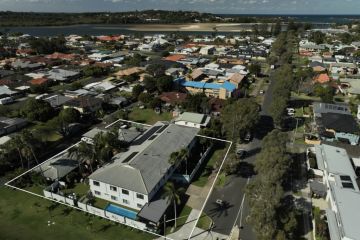Understanding the property cycle

Most of us are familiar with the concept that the property market moves in a cycle – one almost as regular as clockwork. Prices rise, fall, stabilise and then rise once more.
Some would-be investors spend considerable time trying to pick the exact moment they should buy in order to maximise their profits when they eventually come to sell. The trouble is that the property cycle has far less impact on buyers than many believe.
The property-cycle phases
While the names of each phase differ slightly depending on who you talk to, it is agreed that the property cycle is made up of four key phases:
- The value stage: Prices are flat, leading many people to believe it’s a good time to buy.
- The growth phase: Prices begin to rise, slowly at first before picking up the pace.
- The peak: Marks the top of the market. Prices will have increased very rapidly (as much as 20 per cent year on year), but have reached the highest point of the cycle.
- The correction: Price moderation. People often equate a correction to a price crash, but sometimes a correction is simply a long, slow period where prices stagnate.
Together, the whole cycle generally takes around seven to 10 years, and ideally one full cycle will see the price of property double.
How does it change?
In essence, the factors that contribute to one phase will directly lead to the next phase developing.
After a period of stability, people will regain confidence in the market and start investing, which leads to price growth. As prices grow, more and more people pile in, which quickens the pace of price rises. Eventually, affordability constraints will lead to prices peaking, before undergoing a correction to bring prices back from their dizzying heights. Once they hit bottom, a period of some stability ensues, and the cycle begins over again.
The phases, though, don’t transition purely of their own accord. There are a vast number of external factors that play a role in driving change.
Factors at work
Regardless of which phase the market is in, the following are factors that should always be considered as part of your buying and selling decisions:
- The willingness of mortgage lenders to write new loans.
- How much you can borrow to fund a purchase.
- Broader economic outlook and unemployment rates.
- Local infrastructure projects (available on the websites of your local council and state/territory government).
- The rate of property price growth/declines.
- Vacancy rates for investment properties.
- Whether there are available properties to suit your needs.
Additionally, property cycles are much more localised than most people recognise. For example, it is highly unusual for every Australian capital city to be in the same stage of the cycle simultaneously, as each market operates independently of the others.
Yet even that is quite a broad overview. Each town and suburb can be subject to its own property cycle. One particular area may experience rapid growth thanks to a new shopping centre being constructed while the next suburb sees little to no growth.
Conversely, the closure of a major source of employment or a natural disaster (such as Brisbane’s 2011 floods) can cause a sudden local crash while unaffected areas enjoy ongoing growth.
Fundamentally, only you can decide when is the right time for you to buy or sell, depending on a whole range of financial, legal, personal and emotional factors. After all, no matter which stage of the cycle the property market is in, the right time for you to buy is ultimately when the right property comes along at a time you can afford it.
We recommend
We thought you might like
States
Capital Cities
Capital Cities - Rentals
Popular Areas
Allhomes
More







